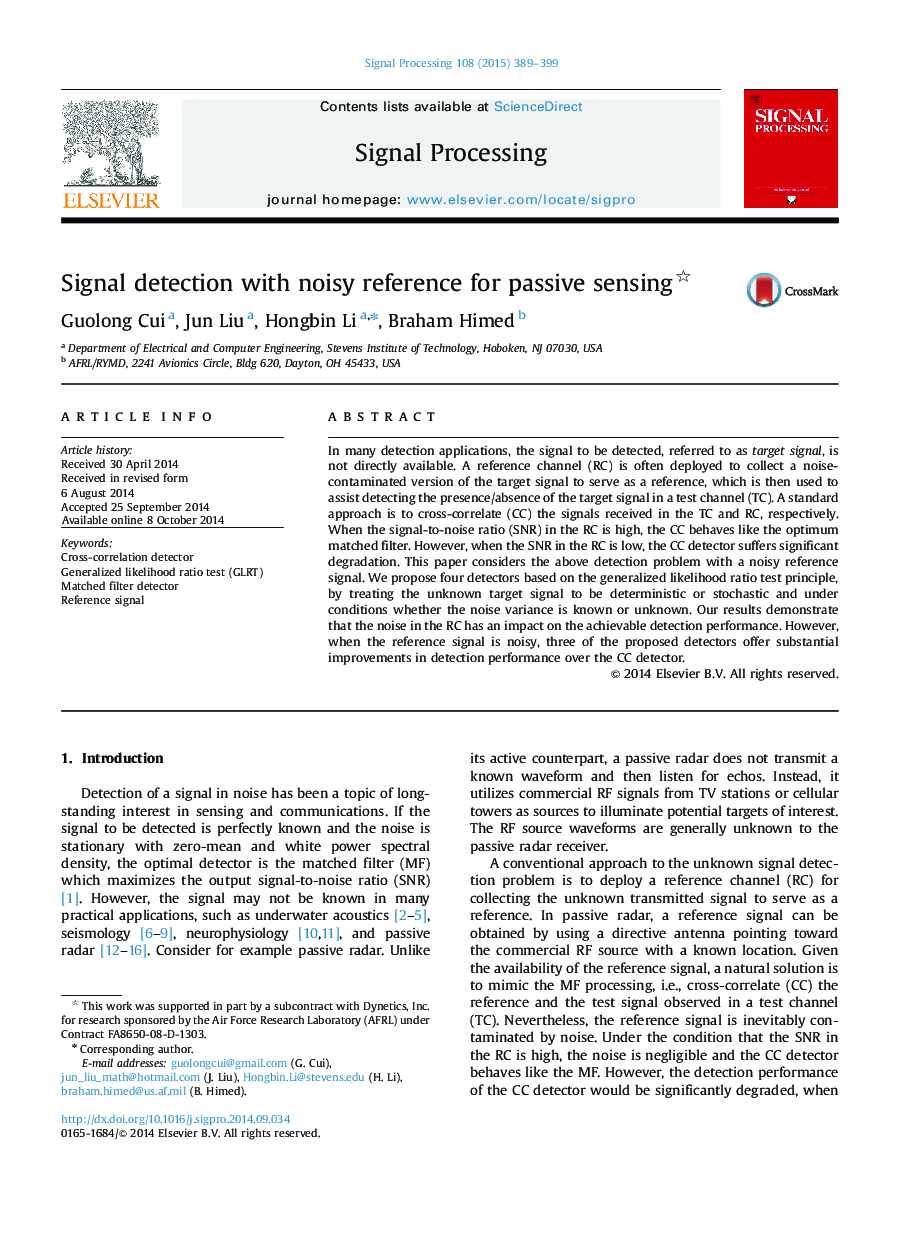| Article ID | Journal | Published Year | Pages | File Type |
|---|---|---|---|---|
| 6959687 | Signal Processing | 2015 | 11 Pages |
Abstract
In many detection applications, the signal to be detected, referred to as target signal, is not directly available. A reference channel (RC) is often deployed to collect a noise-contaminated version of the target signal to serve as a reference, which is then used to assist detecting the presence/absence of the target signal in a test channel (TC). A standard approach is to cross-correlate (CC) the signals received in the TC and RC, respectively. When the signal-to-noise ratio (SNR) in the RC is high, the CC behaves like the optimum matched filter. However, when the SNR in the RC is low, the CC detector suffers significant degradation. This paper considers the above detection problem with a noisy reference signal. We propose four detectors based on the generalized likelihood ratio test principle, by treating the unknown target signal to be deterministic or stochastic and under conditions whether the noise variance is known or unknown. Our results demonstrate that the noise in the RC has an impact on the achievable detection performance. However, when the reference signal is noisy, three of the proposed detectors offer substantial improvements in detection performance over the CC detector.
Related Topics
Physical Sciences and Engineering
Computer Science
Signal Processing
Authors
Guolong Cui, Jun Liu, Hongbin Li, Braham Himed,
